Overview
An upper-level low pressure system was moving into Saskatchewan Friday with a trough of low pressure south into western North Dakota Friday afternoon. A very warm, moist, unstable airmass was in place ahead of this system with dew points in the mid 60s to lower 70s and maximum surface temperatures in the mid 80s to lower 90s. This created an unstable atmosphere and despite weak surface based forcing, isolated strong to severe thunderstorms formed during the day and became quite numerous in the mid to late afternoon.
Of the several clusters of storms which formed, one of the strongest developed to the east of Grand Forks near Fosston MN, moving east-southeast through Bagley and Bemidji, to well past Cass Lake MN. Winds from these storms ranged in the 60-95 mph range and caused considerable tree damage along with some minor structural damage. Other scattered storms formed near the Upper and Lower Red Lakes in Beltrami County Minnesota and one of these produced a brief tornado west of Kelliher MN, which damaged a buildings on a number of farmsteads. Another weak tornado was observed for a brief period in Clay County, just south of Glyndon MN.
In North Dakota, severe thunderstorms affected areas between Carrington and Cooperstown early in the afternoon, where large hail and high winds caused extensive crop damage. Late that evening and overnight, a band of storms first produced hail in areas south and west of Leeds ND and a brief funnel cloud northwest of Minnewauken. Eventually, isolated episodes of large hail and/or strong winds spread from Enderlin ND across the southern Red River Valley into the Pelican Rapids MN area.
Tornadoes:
|
Tornado #1 - 10 W Kelliher, MN
Track Map  
|
||||||||||||||||
|
Tornado #2 - 3.6 S Glyndon, MN
Track Map 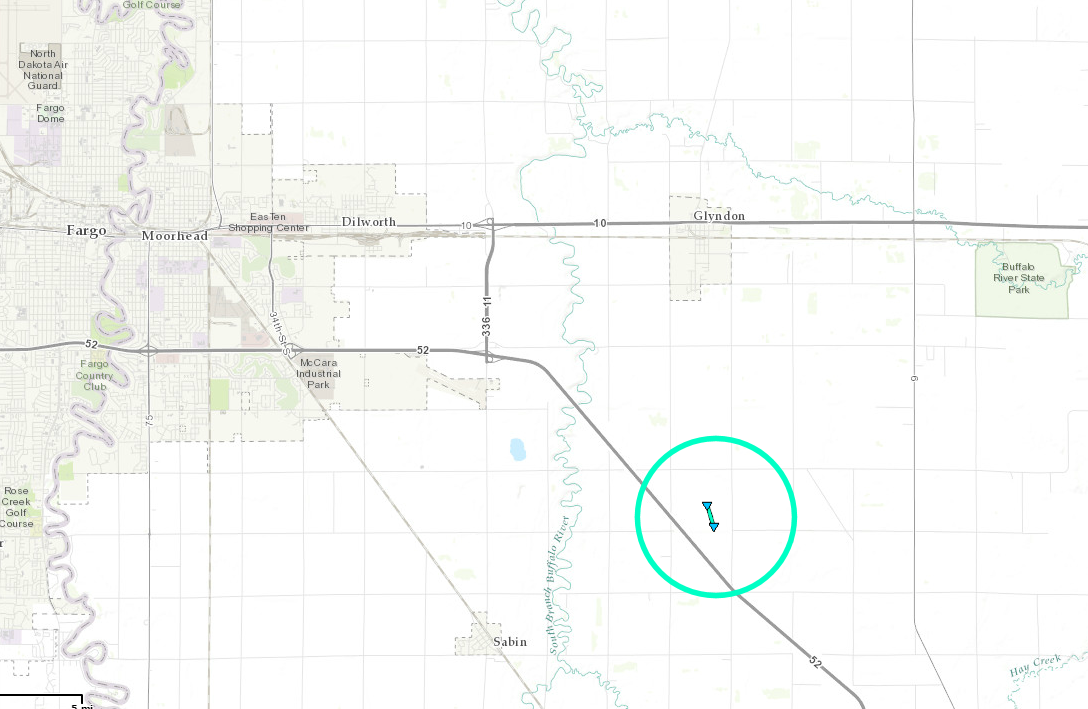 
|
||||||||||||||||
The Enhanced Fujita (EF) Scale classifies tornadoes into the following categories:
| EF0 Weak 65-85 mph |
EF1 Moderate 86-110 mph |
EF2 Significant 111-135 mph |
EF3 Severe 136-165 mph |
EF4 Extreme 166-200 mph |
EF5 Catastrophic 200+ mph |
 |
|||||
Radar:
| 4pm-10pm | 7pm-1am |
Storm Reports
..TIME... ...EVENT... ...CITY LOCATION... ...LAT.LON... ..DATE... ....MAG.... ..COUNTY LOCATION..ST.. ...SOURCE.... ..REMARKS.. 1005 AM HAIL 1 N HANNAH 48.99N 98.69W 07/21/2017 E1.00 INCH CAVALIER ND OTHER FEDERAL REPORTED BY BORDER PATROL. 0210 PM HAIL 4 N GRYGLA 48.36N 95.62W 07/21/2017 E1.00 INCH MARSHALL MN PUBLIC HAIL VARIED RANGING FROM THE SIZE OF PEAS TO QUARTERS. AREA BEAN FIELDS DAMAGED. 0254 PM TSTM WND GST 2 S HUNTER 47.16N 97.22W 07/21/2017 M46.00 MPH CASS ND MESONET PEAK WINDS MEASURED AT A PERSONAL WEATHER STATION. 0340 PM HAIL 2 SE SAUM 47.95N 94.65W 07/21/2017 E1.00 INCH BELTRAMI MN PUBLIC MOSTLY PEA TO MARBLE SIZED HAIL. 0342 PM TSTM WND DMG 5 W COOPERSTOWN 47.44N 98.23W 07/21/2017 GRIGGS ND PUBLIC CORN FIELD SHREDDED WEST OF COOPERTOWN 0345 PM TORNADO 10 W KELLIHER 47.94N 94.66W 07/21/2017 F1 BELTRAMI MN NWS STORM SURVEY THIS TORNADO TRACKED EASTWARD WITH NUMEROUS INTERMITTENT TOUCHDOWNS ALONG A ROUGHLY 3 MILE TRACK ALONG CR34 TO AROUND 7W OF KELLIHER BY 350 PM CDT. NUMEROUS TREES WERE SNAPPED AND A COUPLE OF GRAIN BINS WERE TOPPLED. ROOF PANELS AND WALLS WERE BLOWN OUT OF POLE SHEDS AND CALVING SHEDS WERE FLIPPED. INSULATION AND ROOFING METAL WAS STREWN ABOUT. PEAK WINDS ESTIMATED TO 95 MPH. MAXIMUM WIDTH TO 200 YARDS. 0351 PM TSTM WND GST 3 W COOPERSTOWN 47.44N 98.19W 07/21/2017 M58.00 MPH GRIGGS ND MESONET PEAK WIND MEASURED AT AN NDAWN STATION. 0406 PM TSTM WND GST SHOOKS 47.87N 94.44W 07/21/2017 M60.00 MPH BELTRAMI MN MESONET PEAK WINDS MEASURED AT AN RWIS STATION. 0413 PM HAIL MCINTOSH 47.64N 95.89W 07/21/2017 E0.50 INCH POLK MN TRAINED SPOTTER 0415 PM TSTM WND GST 5 WNW HOPE 47.35N 97.82W 07/21/2017 M59.00 MPH STEELE ND MESONET PERSONAL WEATHER STATION 0416 PM TSTM WND GST 1 N PILLSBURY 47.22N 97.80W 07/21/2017 M49.00 MPH BARNES ND MESONET PEAK WINDS MEARURE AT AN NDAWN STATION. 0420 PM TSTM WND DMG ERSKINE 47.66N 96.01W 07/21/2017 POLK MN BROADCAST MEDIA NUMEROUS LARGE BRANCHES BROKEN DOWN AROUND TOWN. 0422 PM TSTM WND GST 5 NE HOPE 47.38N 97.64W 07/21/2017 M53.00 MPH STEELE ND MESONET PEAK WINDS MEASURED AT AN NDAWN STATION. 0425 PM TSTM WND DMG 1 E ERSKINE 47.66N 95.99W 07/21/2017 POLK MN PUBLIC AT LEAST 6 TO 8 LARGE TREES DOWN IN YARD, JUST EAST OF ERSKINE. ONE TREE WAS UPROOTED. 0435 PM TSTM WND GST 1 NE FOSSTON 47.59N 95.73W 07/21/2017 M49.00 MPH POLK MN ASOS PEAK WIND MEASURED AT THE FOSSTON AIRPORT ASOS. 0445 PM TSTM WND DMG 2 NE LENGBY 47.54N 95.60W 07/21/2017 POLK MN PUBLIC BRANCHES DOWN AND POWER OUT. ONLY HAD PEA SIZED HAIL. 0446 PM TSTM WND GST 6 S LENGBY 47.43N 95.63W 07/21/2017 E60.00 MPH MAHNOMEN MN TRAINED SPOTTER 0450 PM TSTM WND DMG 1 N EBRO 47.51N 95.53W 07/21/2017 CLEARWATER MN NWS STORM SURVEY NUMEROUS LARGE PINE, OAK, AND POPLAR TREE BRANCHES AND LIMBS BROKEN DOWN ACROSS SOUTHERN POPPLE AND NORTHERN FALK TOWNSHIPS. 0500 PM TSTM WND DMG BAGLEY 47.52N 95.40W 07/21/2017 CLEARWATER MN PUBLIC NUMEROUS LARGE PINE, OAK, AND POPLAR TREES AND BRANCHES DOWN IN THE BAGLEY AREA, ALONG WITH POWER LINES DOWN ACROSS SOUTHERN COPLEY TOWNSHIP. 0500 PM HAIL CASSELTON 46.90N 97.21W 07/21/2017 E0.88 INCH CASS ND PUBLIC DIME TO NICKEL SIZED HAIL. 0500 PM HAIL BAGLEY 47.52N 95.40W 07/21/2017 E0.88 INCH CLEARWATER MN PUBLIC HAIL VARYING FROM PEA TO NICKEL SIZE 0500 PM TSTM WND DMG 1 S BAGLEY 47.51N 95.40W 07/21/2017 CLEARWATER MN PUBLIC NUMEROUS TREES BLOWN DOWN. 0500 PM HAIL EBRO 47.50N 95.53W 07/21/2017 E1.25 INCH CLEARWATER MN PUBLIC MOSTLY DIME TO NICKEL SIZE HAIL, BUT SOME LARGER HAILSTONES WERE ABOUT A HALF DOLLAR IN SIZE 0501 PM TSTM WND GST 4 SSE BAGLEY 47.47N 95.37W 07/21/2017 E90.00 MPH CLEARWATER MN TRAINED SPOTTER WINDS BLEW OUT A WINDOW ON A HOUSE AND BROKE DOWN NUMEROUS LARGE BRANCHES. NUMEROUS PINE, OAK, AND POPLAR TREES SNAPPED OR UPROOTED ACROSS NORA TOWNSHIP. DOWNED PINE TREES WERE LEFT LYING ACROSS HWY 92 FOR ABOUT SIX MILES OF ITS NORTH-SOUTH LENGTH. 0504 PM HAIL 4 SSE BAGLEY 47.47N 95.37W 07/21/2017 E2.00 INCH CLEARWATER MN TRAINED SPOTTER IN ADDITION TO SEVERE WINDS... LARGE HAIL COVERED THE GROUND. 0516 PM TSTM WND DMG 6 S SOLWAY 47.43N 95.13W 07/21/2017 BELTRAMI MN PUBLIC PEA SIZE HAIL, BRANCHES SCATTERED, AND A FEW TREES SNAPPED 0522 PM TSTM WND GST 3 E BECIDA 47.35N 95.02W 07/21/2017 E75.00 MPH HUBBARD MN TRAINED SPOTTER METAL ROOFING PANELS TORN OFF OF A BARN. LOCATION AND TIME ESTIMATED PENDING FURTHER REPORTING. 0527 PM TSTM WND DMG 1 N WILTON 47.52N 94.99W 07/21/2017 BELTRAMI MN NWS STORM SURVEY NUMEROUS LARGE TREE BRANCHES AND LIMBS BROKEN DOWN ACROSS SOUTHERN ECKLES TOWNSHIP. 0534 PM TORNADO 4 S GLYNDON 46.81N 96.58W 07/21/2017 F0 CLAY MN STORM CHASER A WEAK TORNADO WAS OBSERVED FOR ABOUT A MINUTE OVER LARGELY OPEN FARMLAND JUST NORTH OF I-94 IN EXTREME SOUTHEAST GLYNDON TOWNSHIP. PEAK WINDS ESTIMATED TO 75 MPH. MAXIMUM WIDTH TO 100 YARDS. TRACK WAS ESTIMATED TO BE SOUTHEASTERLY FOR A HALF MILE OR LESS. 0536 PM TSTM WND GST 3 NW BEMIDJI 47.51N 94.92W 07/21/2017 M54.00 MPH BELTRAMI MN AWOS PEAK WINDS MEASURED AT THE BEMIDJI AIRPORT AWOS. 0537 PM TSTM WND GST 3 WNW BEMIDJI 47.50N 94.94W 07/21/2017 M62.00 MPH BELTRAMI MN MESONET PEAK WINDS MEASURED AT THE BEMIDJI RAWS SITATION. 0540 PM TSTM WND DMG 7 N BEMIDJI 47.58N 94.88W 07/21/2017 BELTRAMI MN PUBLIC SEVERAL TREES DOWN. SOME DOCKS, BOATS, AND BOAT LIFTS, FLIPPED ON LAKE MOVIL. 0540 PM TSTM WND DMG TURTLE RIVER 47.59N 94.76W 07/21/2017 BELTRAMI MN PUBLIC SEVERAL TREES DOWN AND NUMEROUS BRANCHES DOWN 0540 PM TSTM WND DMG 5 N BEMIDJI 47.55N 94.88W 07/21/2017 BELTRAMI MN EMERGENCY MNGR NUMEROUS LARGE TREE BRANCHES AND LIMBS BROKEN DOWN. POWER OUTAGES. 0542 PM TSTM WND DMG 2 NNE LAPORTE 47.24N 94.74W 07/21/2017 HUBBARD MN PUBLIC A FEW LARGE TREES BROKEN DOWN AROUND GARFIELD LAKE. 0545 PM TSTM WND DMG 7 NE BEMIDJI 47.55N 94.77W 07/21/2017 BELTRAMI MN PUBLIC SEVERAL LARGE TREES WERE SNAPPED OR UPROOTED. 0545 PM HAIL 3 ENE CALLAWAY 47.00N 95.85W 07/21/2017 E1.00 INCH BECKER MN PUBLIC VERY HEAVY RAIN AND A FEW LARGE HAIL. 0550 PM HAIL 1 S BENEDICT 47.14N 94.69W 07/21/2017 E1.00 INCH HUBBARD MN TRAINED SPOTTER A FEW QUARTER SIZED HAIL AND VERY STRONG WINDS. SOME LARGE 4-6 INCH DIAMETER BRANCHES BROKEN DOWN AROUND BENEDICT LAKE. 0553 PM HAIL 1 E DOWNER 46.75N 96.47W 07/21/2017 E1.00 INCH CLAY MN STORM CHASER HAIL COVERED THE ROAD EAST OF DOWNER. TIME ESTIMATED BASED ON RADAR. 0600 PM TSTM WND DMG 8 ESE BEMIDJI 47.44N 94.72W 07/21/2017 BELTRAMI MN PUBLIC LARGE OAK TREE TOPPLED ON TO HOUSE NEAR LAKE ANDRUSIA. REPORT POSTED VIA SOCIAL MEDIA. TIME ESTIMATED BASED ON RADAR. 0610 PM HAIL 11 SW HANKINSON 45.96N 97.06W 07/21/2017 E1.00 INCH RICHLAND ND PUBLIC MOSTLY PEA TO DIME SIZE. 0710 PM HAIL 3 SE ROTHSAY 46.44N 96.24W 07/21/2017 E1.25 INCH OTTER TAIL MN PUBLIC SOME QUARTER TO HALF DOLLAR SIZED HAIL IN HEAVY RAIN. 0716 PM TSTM WND GST 2 S HUNTER 47.16N 97.22W 07/21/2017 M56.00 MPH CASS ND MESONET PEAK WINDS MEASURED AT A PERSONAL WEATHER STATION. 1100 PM HAIL 6 S PLEASANT LAKE 48.27N 99.80W 07/21/2017 E1.00 INCH BENSON ND PUBLIC 1106 PM TSTM WND GST 1 N BAKER 48.18N 99.65W 07/21/2017 M48.00 MPH BENSON ND MESONET PEAK WINDS MEASURED AT AN NDAWN STATION. 1118 PM HAIL 1 N HARLOW 48.18N 99.52W 07/21/2017 E1.25 INCH BENSON ND PUBLIC HAIL RANGED FROM THE SIZE OF PEAS TO HALF DOLLAR 1125 PM FUNNEL CLOUD 5 NW MINNEWAUKAN 48.12N 99.33W 07/21/2017 BENSON ND LAW ENFORCEMENT VIEWED FROM ABOUT 5N MINNEWAUKEN LOOKING WEST. 1133 PM HAIL 3 SSE BRINSMADE 48.14N 99.30W 07/21/2017 E1.50 INCH BENSON ND PUBLIC LARGE HAIL AND VERY STRONG WINDS. ESTIMATED TO 50 MPH OR GREATER. 1246 AM HAIL 3 S HAMAR 47.80N 98.57W 07/22/2017 E1.25 INCH EDDY ND PUBLIC LARGE DIME TO HALF DOLLAR SIZED HAIL FOR A COUPLE OF MINUTES. 0242 AM TSTM WND GST 2 S HUNTER 47.16N 97.22W 07/22/2017 M60.00 MPH CASS ND PUBLIC PERSONAL WEATHER STATION 0325 AM HAIL 6 S ENDERLIN 46.54N 97.60W 07/22/2017 E1.25 INCH RANSOM ND PUBLIC LARGE HAIL AND STRONG WINDS. SOME SMALL BRANCHES DOWN AROUND THE FARMYARD. TIME ESTIMATED BASED ON RADAR. 0332 AM HAIL 2 N COMSTOCK 46.69N 96.75W 07/22/2017 E1.25 INCH CLAY MN PUBLIC HAIL PATCH NOTED ACROSS HIGHWAY 75. SOME WAS STILL A BIT BIGGER THAN A QUARTER MAYBE 10 MINUTES AFTER IT PASSED. TIME ESTIMATED BASED ON RADAR. 0400 AM HAIL 3 N LAWNDALE 46.60N 96.36W 07/22/2017 E1.00 INCH WILKIN MN PUBLIC HEAVY RAIN AND WIND. SOME LARGE HAIL. 0412 AM TSTM WND GST 1 SE DUNVILLA 46.65N 96.00W 07/22/2017 M53.00 MPH OTTER TAIL MN PUBLIC PERSONAL WEATHER STATION. TIME ESTIMATED FROM RADAR. 0420 AM TSTM WND DMG 4 E PELICAN RAPIDS 46.57N 96.00W 07/22/2017 OTTER TAIL MN PUBLIC LIDA GREENS GOLF COURSE SUSTAINED NUMEROUS DAMAGED TREES WITH BRANCHES AS LARGE AS 8 INCHES IN DIAMETER BROKEN OFF. TIME ESTIMATED FROM RADAR. 0426 AM HAIL MAPLEWOOD STATE PARK 46.53N 95.95W 07/22/2017 E1.50 INCH OTTER TAIL MN PARK/FOREST SRVC HAIL TO PING BALL SIZE OR LARGER FELL ACROSS NORTHERN MAPLEWOOD TOWNSHIP. A FEW LARGE TREES BLOWN DOWN AT THE STATE PARK. TIME ESTIMATED BASED ON RADAR.
Environment
All Images From 00z July 22 2017
 |
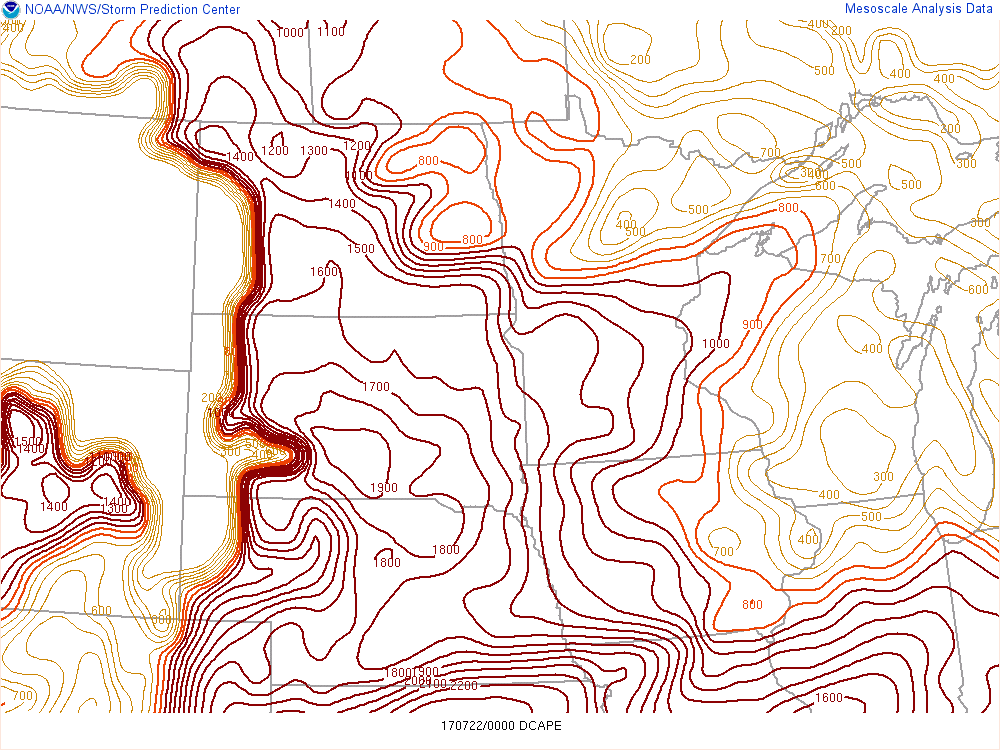 |
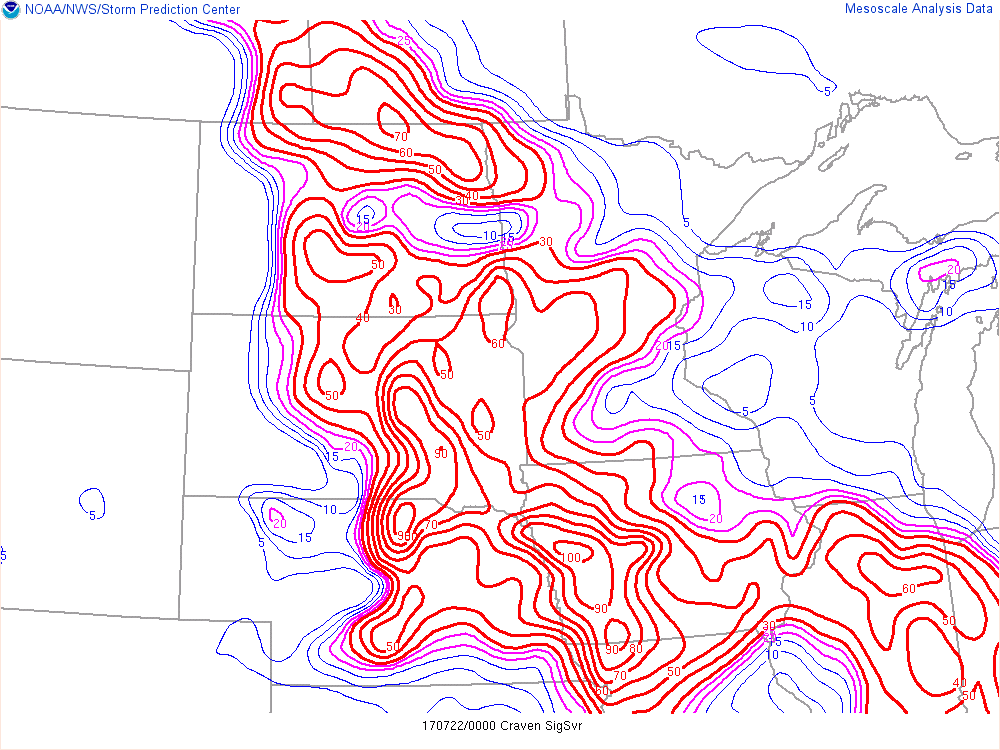 |
| Figure 1: MLCAPE | Figure 2: DCAPE | Figure 3: Craven/Brooks Sig Severe |
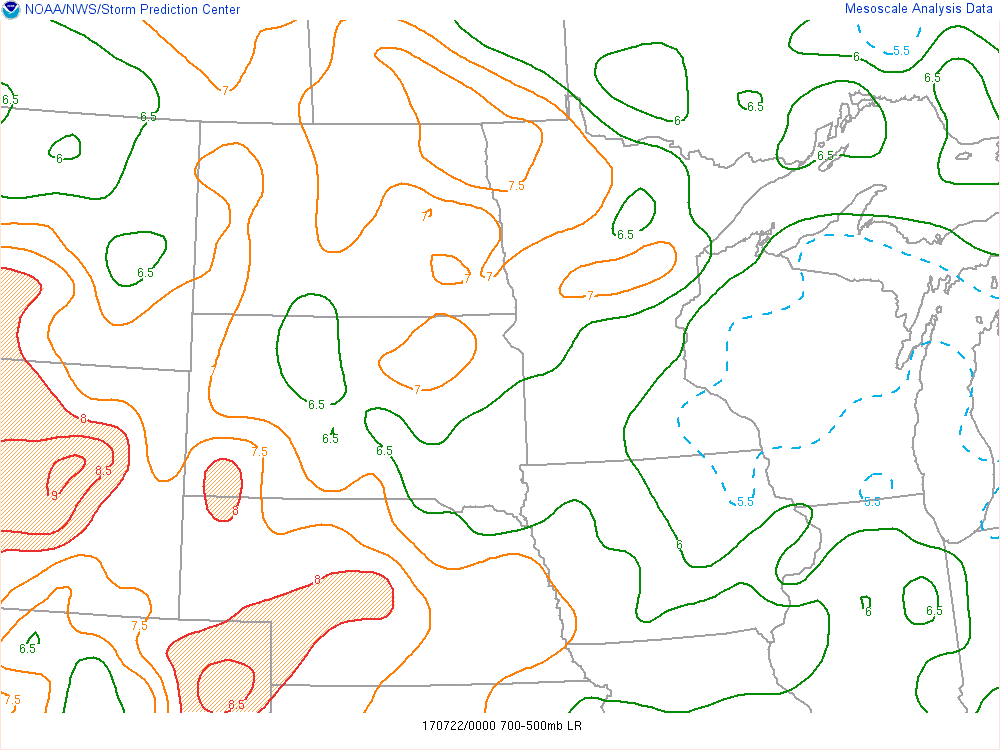 |
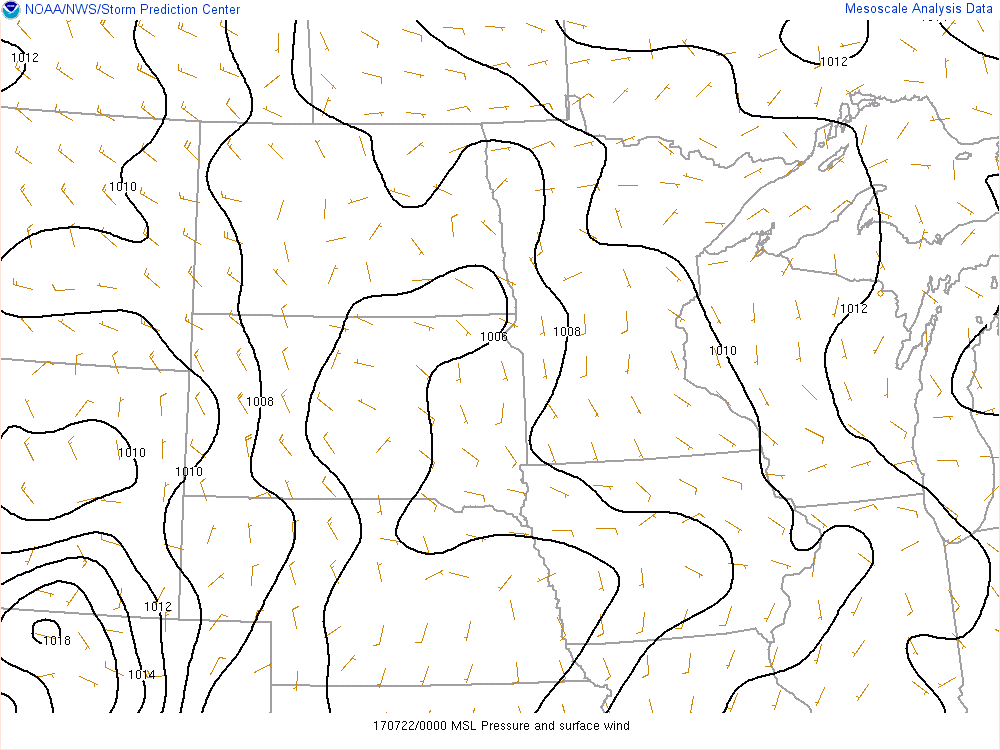 |
 |
| Figure 4: Mid-Level Lapse Rate | Figure 5: Surface Chart | Figure 6: Precipitable Water |
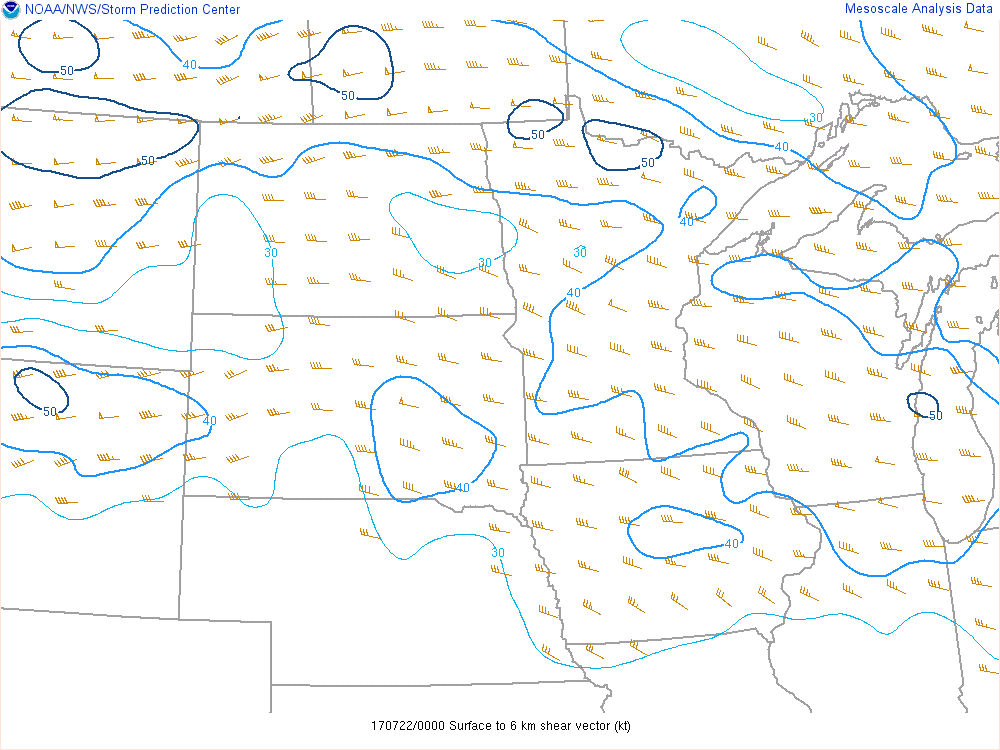 |
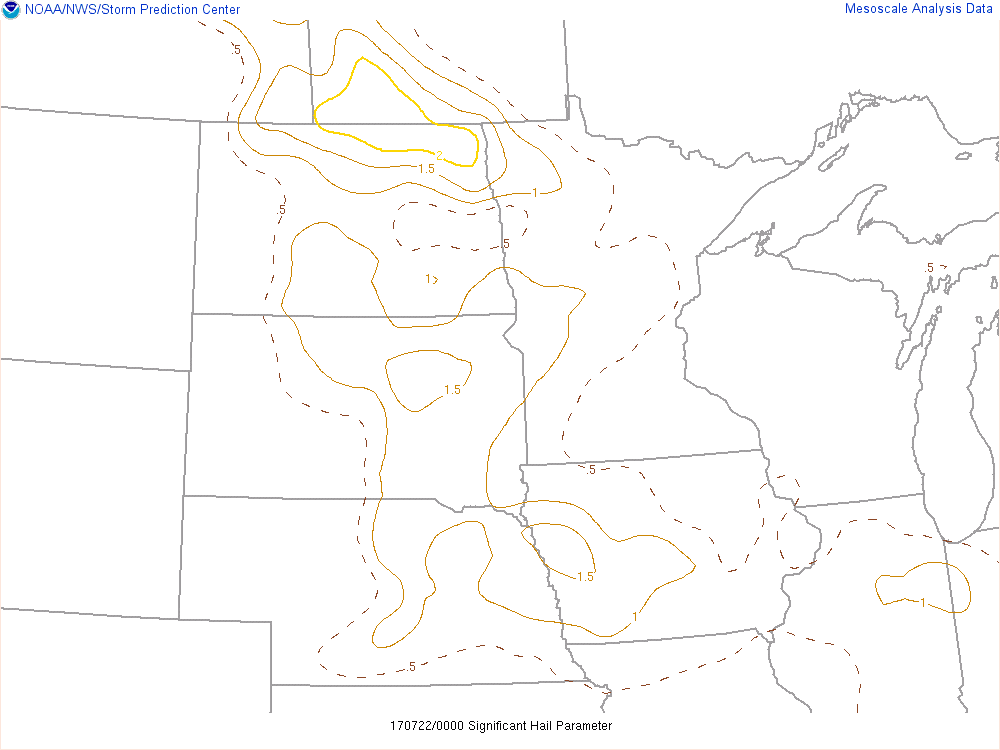 |
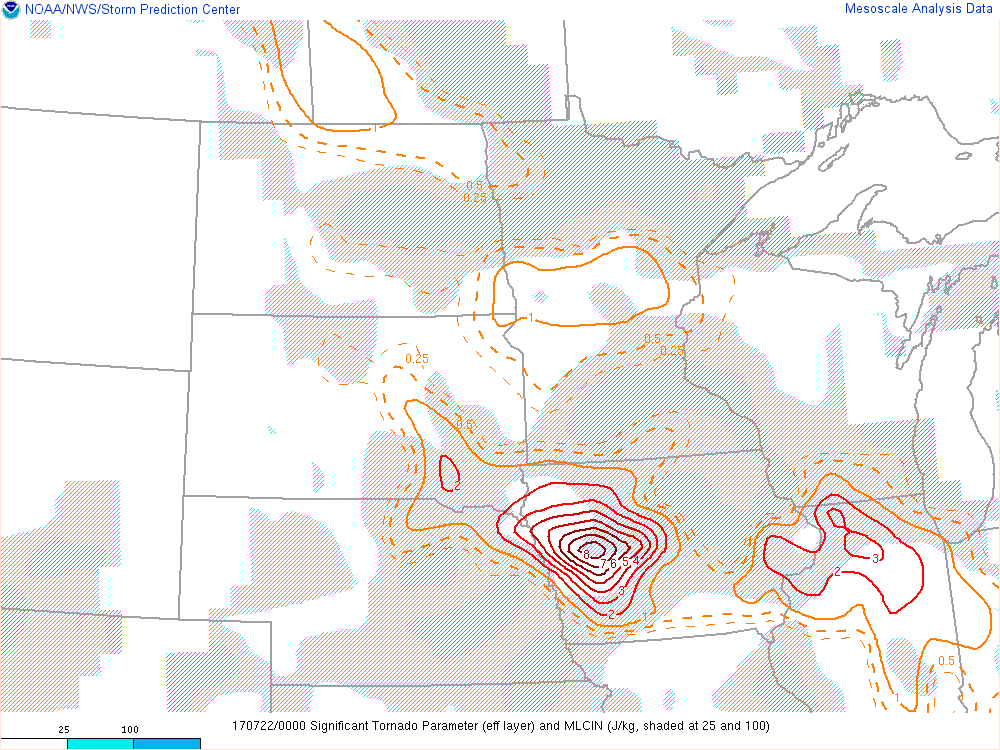 |
| Figure 7: 0-6km Shear | Figure 8: Significant Hail Parameter | Figure 9: Significant Tornado Parameter |
Additional Information
The Forecast
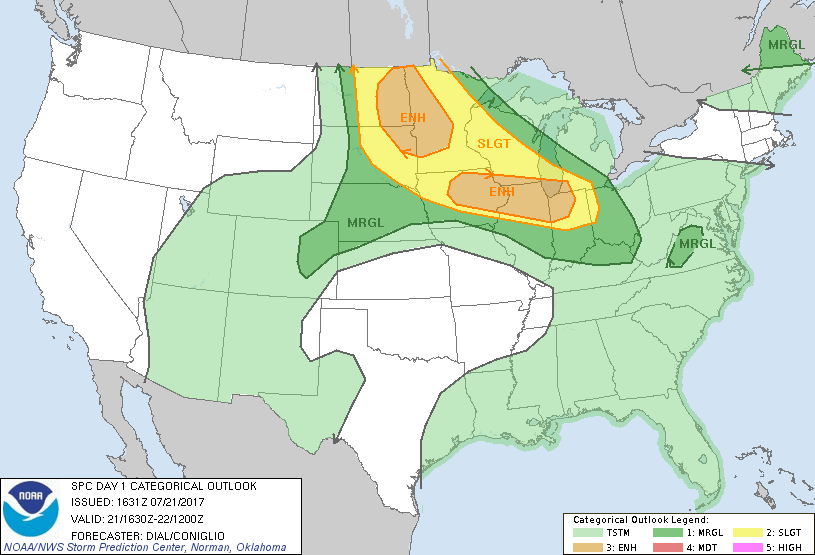 |
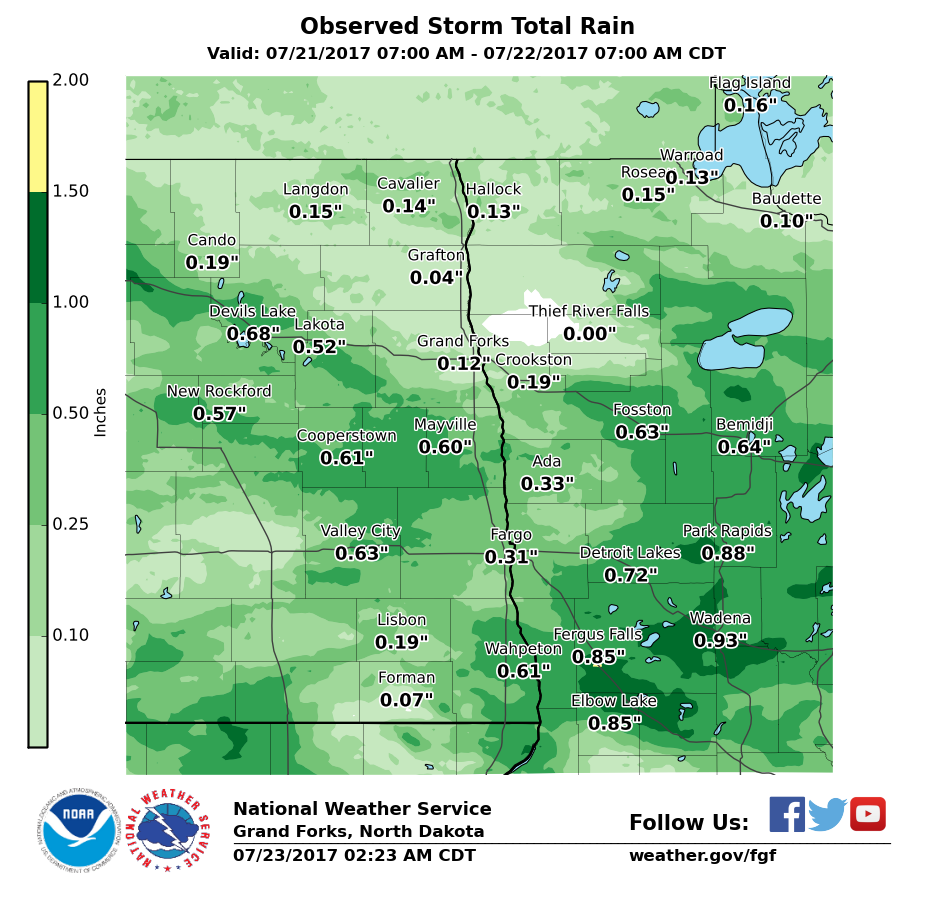 |
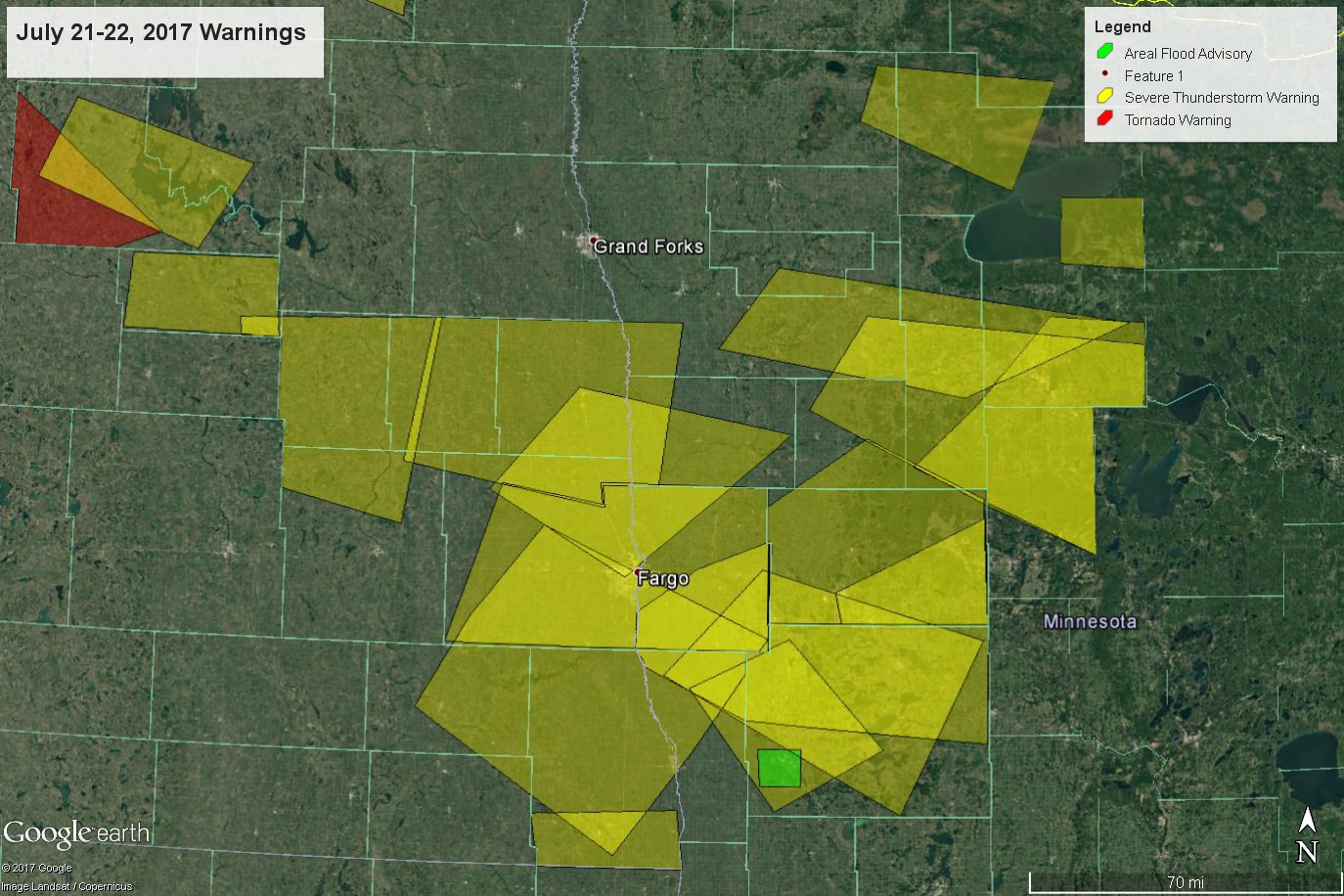 |
| SPC Day 1 Categorical Outlook | Estimated Rainfall | Warnings |
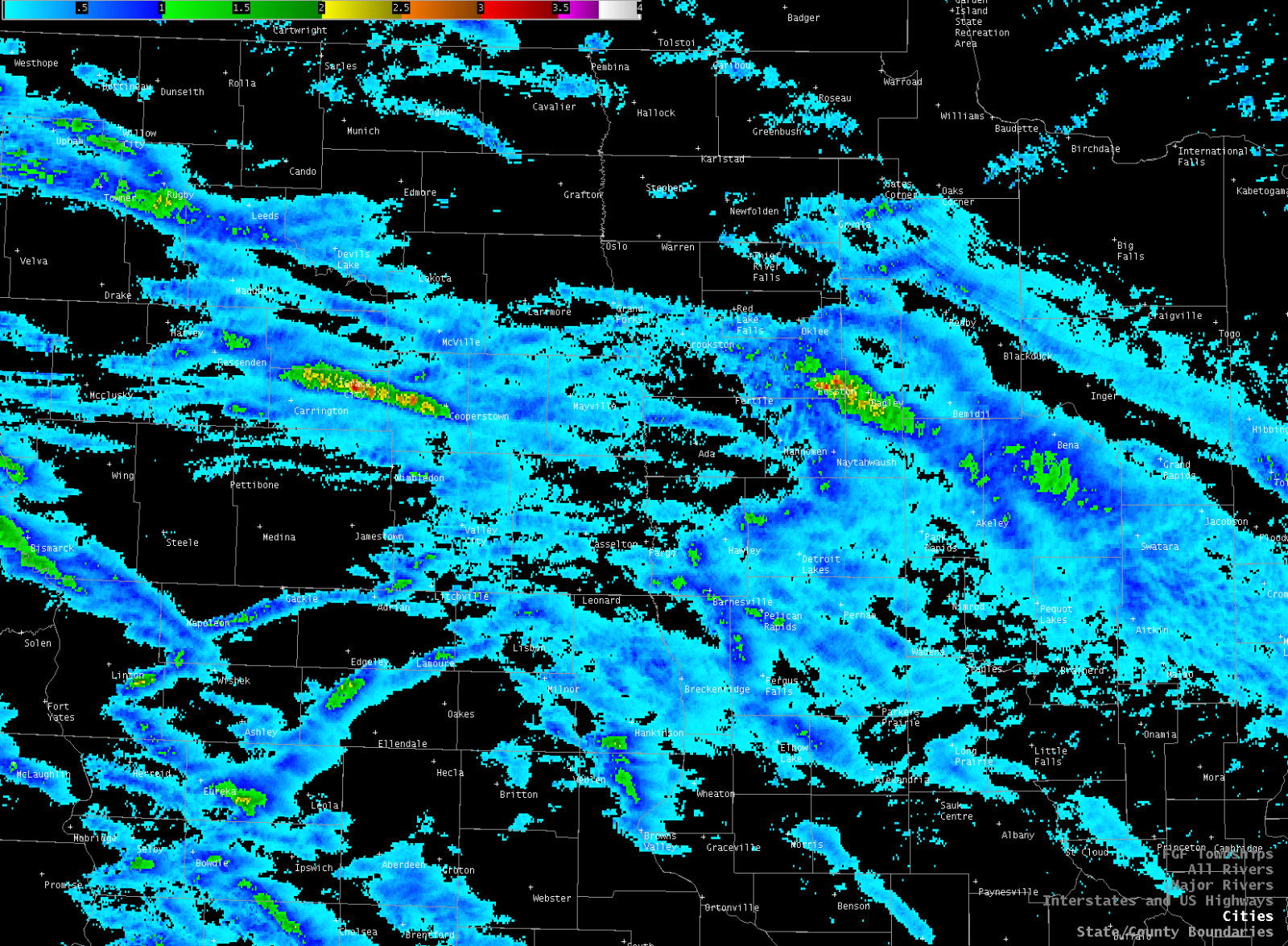 |
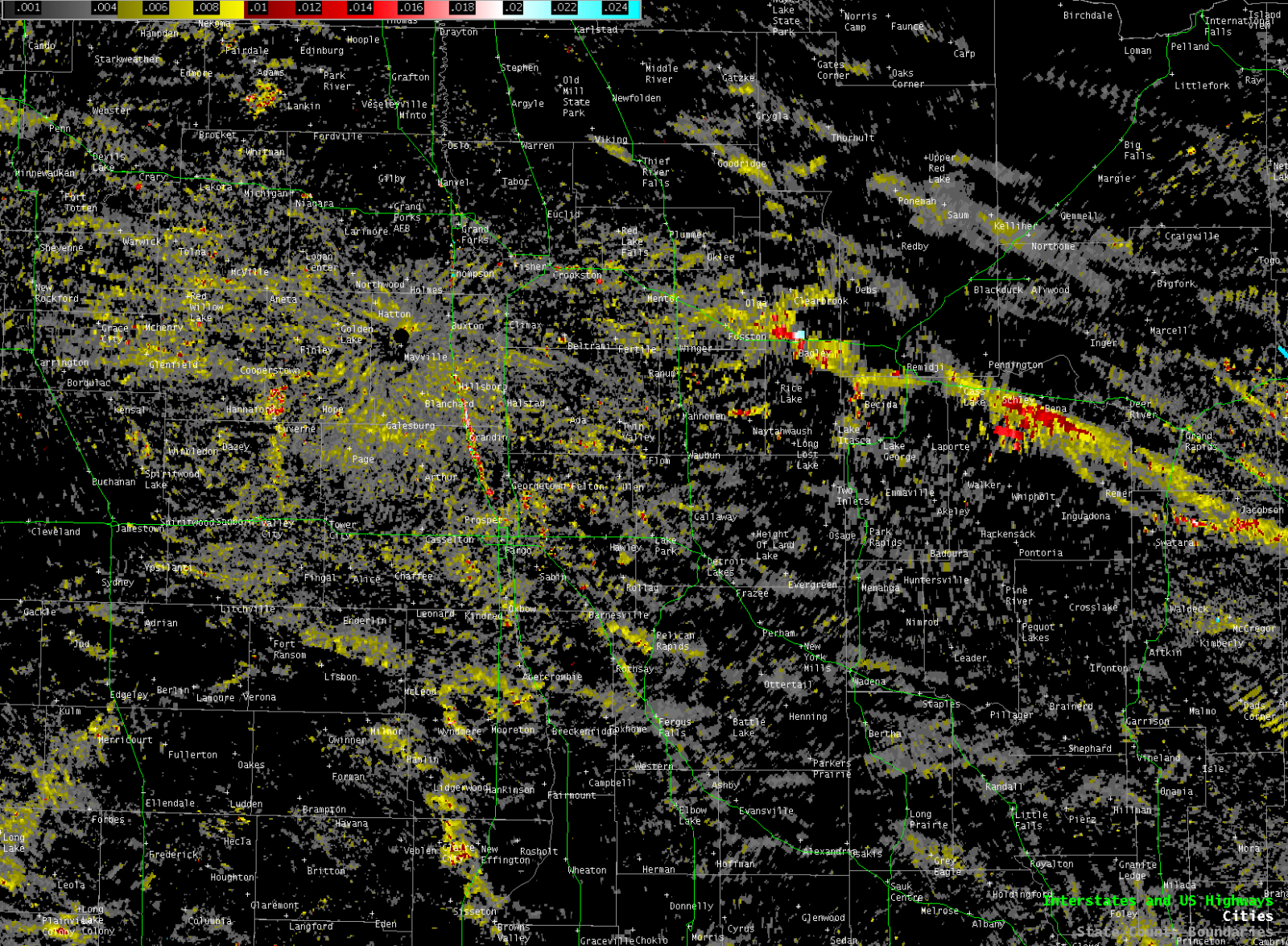 |
Link to a GOES-16 Satellite loop of 1 minute Clean IR Imagery during the event: |
| MRMS MESH (Hail) Tracks | MRMS Low Level Rotation Tracks |
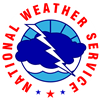 |
Media use of NWS Web News Stories is encouraged! Please acknowledge the NWS as the source of any news information accessed from this site. |
 |